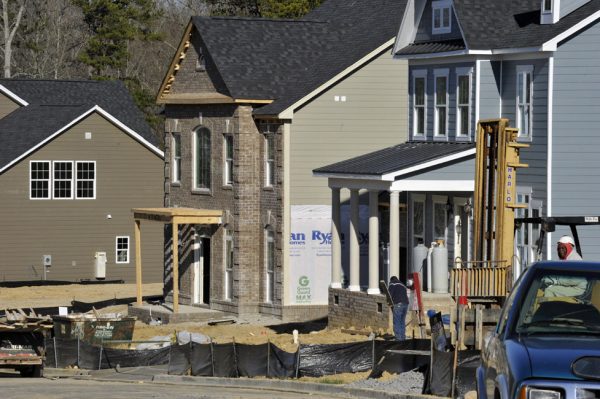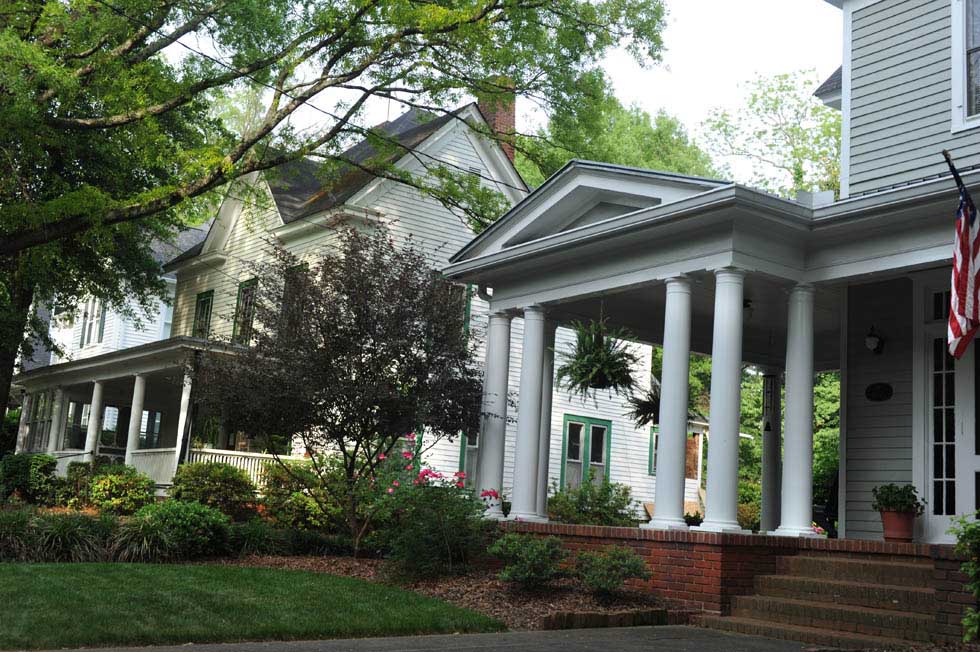As cities grow, former hamlets become booming suburbs

Contributors: Clayton Hansen & Mary Newsom
North Carolina’s two largest cities – Charlotte and Raleigh – continue to drive a growth pattern that’s comparatively new for the state, recently released U.S. Census estimates show.
In earlier decades the state’s population growth was more evenly distributed. But in the past couple of decades growth has been strongly linked to Charlotte and Raleigh and the municipalities and counties that surround them.
This is a change, according to UNC Charlotte geographer Bill Graves. Graves, an associate professor of geography with expertise in urban development, said in an email interview that growth in the two largest cities accounts for a substantial percentage of the state’s overall growth.
“While we are seeing impressive percentage growth rates (once again) from surrounding counties, they are still a small part of the story of N.C.’s very polarized growth. This polarization is a relatively new phenomenon,” Graves said.
The newest census estimates for municipalities, released last month, show Raleigh at 458,880, gaining 8,933 (1.99 percent growth rate) from 2015 to 2016, and Charlotte – by far the state’s largest city at 842,051 – growing by 15,656 people (1.89 percent). Greensboro (No. 3 in population) and nearby Winston-Salem (No. 5) showed slower growth rates. Of the state’s 15 largest cities, the biggest growth rate was in Concord, the Cabarrus County city abutting Charlotte. It grew 2.56 percent and at 89,891 is now larger than Asheville. Gastonia, in the county just west of Charlotte where in recent decades growth has lagged, showed a perkier 1.39 percent increase to 75,536.
The new population estimates also show continuing shuffling in the size rankings of the smaller cities and towns near Charlotte as fast-growing places near the city – some of them tiny crossroads half a century ago – push ahead of the 20th century’s traditional population centers.
One example: Huntersville – whose 1950 population was about 900 and by 1990 was only 3,014 – is now home to 54,839 people, making it larger than the Catawba County city of Hickory, at 40,567.
Another example is the suburban Union County town of Indian Trail, whose population did not even top 1,000 until the 1990 census. By 2016 its estimated population was 38,222, larger than the historic regional cities of Salisbury, Monroe, Statesville and Shelby.
Near Charlotte, the city of Concord was a textile town of 16,942 in 1980. It has more than quintupled to a population of 89,891, becoming the state’s 11th largest city and eclipsing Asheville, No. 12 at 89,121. The once tiny Raleigh suburb of Cary (estimated at 162,320), is the state’s seventh largest municipality, larger than Wilmington, High Point and Chapel Hill.
Looking at growth rates in the Charlotte region between 2015 and 2016, the pattern is clear: Towns clustered next to Mecklenburg County topped the list. The region’s top growth rate for the year, 9.44 percent, was in Fort Mill, S.C. Other hot spots of growth were Union County’s Waxhaw (5.07 percent growth), Huntersville (4.04 percent), Cabarrus County’s Harrisburg (3.4 percent) and Locust in Stanly County (3.36 percent).
Click here to see more Charlotte-area cities’ 2015-2016 rates.
The same pattern is true in the Raleigh area. The Raleigh News & Observer reported that so far this decade, from 2010 to 2016, six of the state’s 10 fastest-growing towns were former railroad towns and crossroad communities in Wake County: Rolesville, Fuquay-Varina, Holly Springs, Wake Forest, Morrisville and Knightdale.
It’s worth remembering that municipalities can gain population through annexation as well as people moving to town. Also, a place with a small population can gain far fewer residents but show a much larger percentage increase than a city of hundreds of thousands of people. To illustrate that, note that Charlotte, which from 2015 to 2016 gained 15,656 – more than the total population of fast-growing Fort Mill – showed only a 1.86 percent growth rate, compared with Fort Mill’s 9.44 percent.
“The satellite towns’ growth is a product of big city growth,” Graves noted, “and would not be happening without the job creation we see in Charlotte, Raleigh, etc.” This growth raises big planning issues such as managing congestion and land use, he said. “All these are regional issues, but we certainly are reluctant to manage them regionally.”
It’s also worth noting the word “estimates” in the Census Bureau information. The numbers sometimes change as the bureau refines its counts. And the Census Bureau uses a different method for estimating than some other government agencies, such as the N.C. Office of State Budget and Management.
Finally, the census population estimates released in May don’t include the large and growing unincorporated areas near Charlotte, such as Denver in east Lincoln County, Lake Wylie in York County, S.C., and Indian Land in Lancaster County, S.C. For example, estimates from the Census Bureau’s American Community Survey (a different part of the Census Bureau) put the 2015 population of two census tracts that include Indian Land at 24,555, bigger than Indian Land’s fast-growing neighbor, Fort Mill. (See a 2016 PlanCharlotte.org article, “Fighting over growth on Charlotte’s southern border.”)
